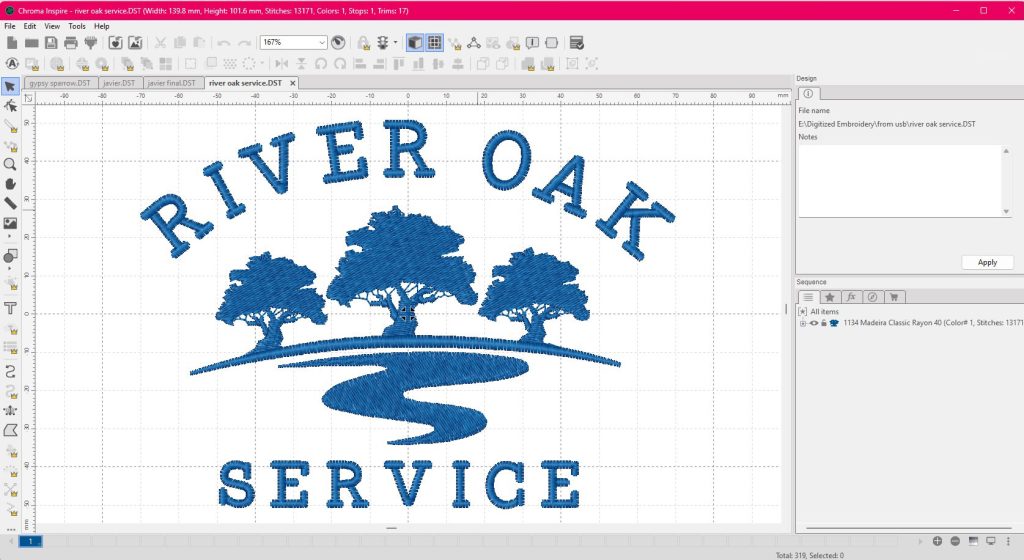Embroidery is a timeless and elegant way to decorate clothing, accessories, and promotional items. However, before you can see your logo or design beautifully embroidered, it needs to undergo a process called digitization.
In this article, we’ll explore why digitization is essential for embroidery and what it entails.

What is Digitization in Embroidery?
Embroidery Digitization refers to the conversion of a logo, design, or artwork into a digital embroidery file format. This process is necessary because embroidery machines work with specific file types that dictate the stitching path and colors. Unlike printing, where you can use the original image file, embroidery requires a unique digital format to translate your design into stitches.
Here are some reasons why your logo needs to be digitized for embroidery:
Stitching Instructions
When you provide a digital image of your logo, it doesn’t contain information about how to embroider it. Digitization creates a map that instructs the embroidery machine on where to place each stitch, which colors to use, and the order of stitching. Without this map, the embroidery machine wouldn’t know how to replicate your design accurately.
Size and Scaling
Embroidery machines need precise instructions for different sizes and variations of your logo. Digitization ensures that your logo can be embroidered at various sizes while maintaining the integrity of the design. A well-digitized logo will look just as sharp on a small hat as it does on a large jacket.
Stitch Count
The digitized file determines the number of stitches required to create your design. A highly detailed logo may have a high stitch count, while a simpler one will have fewer stitches. This information helps in estimating production time and cost.
Thread Color Matching
The digitized file specifies the thread colors to be used for each element of your design. This is crucial for achieving the desired color accuracy and consistency across multiple items.
Texture and Effect
Digitization allows you to control the texture and effects of your embroidery. For example, you can choose between satin stitches for a smooth, shiny finish or fill stitches for a textured, matte appearance.
3D Puff and Special Techniques
If you want certain elements of your design to have a raised, 3D effect or use specialized techniques like appliqué, the digitized file must include instructions for these effects.
Precision and Quality
Proper digitization ensures that your logo will be embroidered with precision and quality. It minimizes the risk of errors, such as misaligned stitches or thread breaks, which can occur with poorly digitized designs.






Chose a Professional Digitizer
While digitization is essential for embroidery, not all digitizers produce the same quality results. It’s important to choose a professional digitizer or embroidery service with experience and expertise in creating high-quality embroidery files. They can ensure that your logo is digitized correctly, resulting in stunning embroidered products that accurately represent your brand or design.
Digitization is a critical step in the embroidery process, as it transforms your logo or design into a format that embroidery machines can understand and execute accurately. It provides the necessary instructions for stitching, color matching, and achieving the desired texture and effect.
By investing in professional digitization, you can ensure that your embroidered products look exceptional and effectively convey your brand or message.
Need digitization or embroidery services? Let’s Talk!